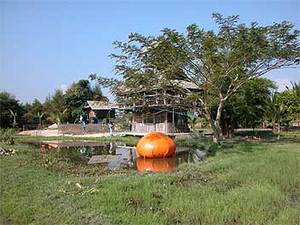This is an archive of the ArtCat Zine, 2007-2009. Please visit our new project, IDIOM.
Alternative Economies at MoMA
Art and Commerce: Alternative Economies; Christine Hill and Rirkrit Tiravanija
6:30 Thursday 16 October 2008
MoMA, Titus Theater 1 - 11 W. 53rd St, New York NY
$10
Several weeks ago Holland Cotter, writing for the New York Times, penned a slightly ambiguous review of Demonstration Drawings, Rirkrit Tiravanija's solo exhibition hanging now at the Drawing Center through 6 November. The Times' senior critic seemed generally sympathetic to the show, commending Tirvanija's efforts at two particular moments. First, there is the excitation of the not uninteresting creeping guilt of a commercially viable practice, what Cotter in other words describes as "the divide, if it exists, between art’s vaunted relevance and its luxury-item status." Then, of course, there is the equally platitudinous, though perhaps likewise not uninteresting, contradiction evoked by a show that points to a difference "between the truth of history and the truth of the recording hand." Who can resist however, answering to the first matter, if one is at all familiar with Rirkrit's practice, not just as an artist, but as an organizer, a member of various communities, and a teacher. Cotter implicitly criticizes Rirkrit's practice for a soft exploitation in the form of lump -- perhaps low -- sums paid to the worker-artists who produce the drawings that are "already bought or for sale," and for which "Mr. Tiravanija will collect whatever further profit" following their deinstallation. And yet, even in Cotter's narrow perspective of the situation, Tiravanija isn't completely to blame. Certainly not in world of grand patronage and market rule through which the show seems to elegantly waltz.
Never mentioned in the piece are the the final destinations of much of the profits generated from such salable work by Tiravanija, the most ambitious and important of which is undoubtedly The Land Foundation, an experiment in self-sustainable organization emerging from the arts which Tiravanija and several other artists founded in 1998. Privately purchasing a plot of agriculturally unattractive land in Northern Thailand and developing it steadily since, The Land is one in a series of commercially unmotivated models in self-organization and artistic agency to emerge from a larger group of colleagues of Tiravanija's, and many of which are non-entrepreneurial and in fact self-funded. Aside from functioning as a platform for Tiravanija and his collaborators to build architecture and enact various other projects, artistic or otherwise, The Land Foundation, like the land on which it rests, was from the start imagined, and in fact has become, a community hub: offering scholarships, funding and live/work spaces to a local community as well as functioning as a landing pad for an international roster of artists and cultural workers wanting to realize projects outside of that brutish, market-oriented world Cotter accuses Tiravanija of navigating with such acumen.
Thursday 16 October at MoMA, Rirkrit Tiravanija along with artist Christine Hill will present a talk entitled Art and Commerce, perhaps on just such alternative economic models. Hill herself is well known for a project called the Volksboutique, a long-term engagement that is sometimes an entrepreneurial performance, and others a model for ensuring artistic autonomy. The conversation will be moderated by MoMA director Glenn D. Lowry.
ZINE
HOME
TIPS / COMMENTS
CATEGORIES
CONTRIBUTORS
- Greg Afinogenov
- B. Blagojevic
- Adda Birnir
- Susannah Edelbaum
- Julie Fishkin
- Paddy Johnson
- Jessica Loudis
- Christopher Reiger
- Andrew Robinson
- Peter J. Russo
- Blythe Sheldon
- S.C.Squibb
- Hrag Vartanian

